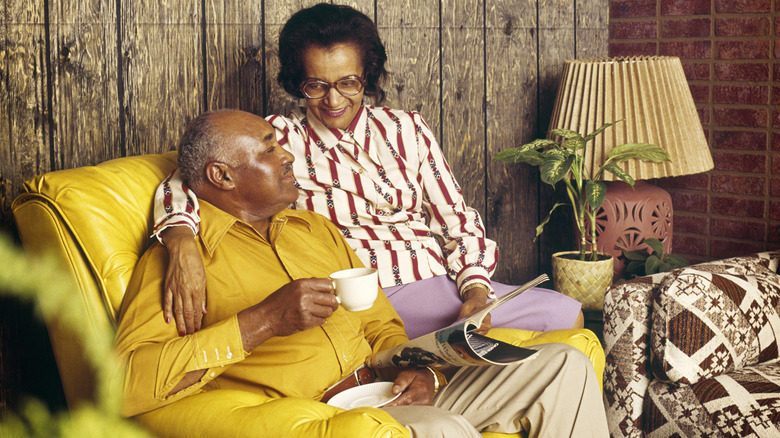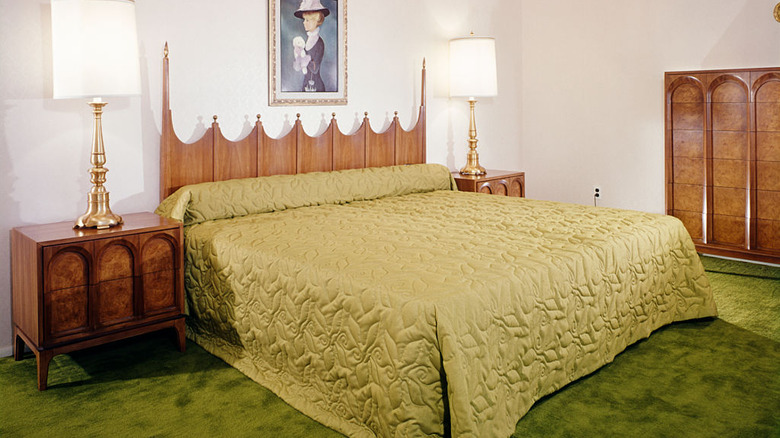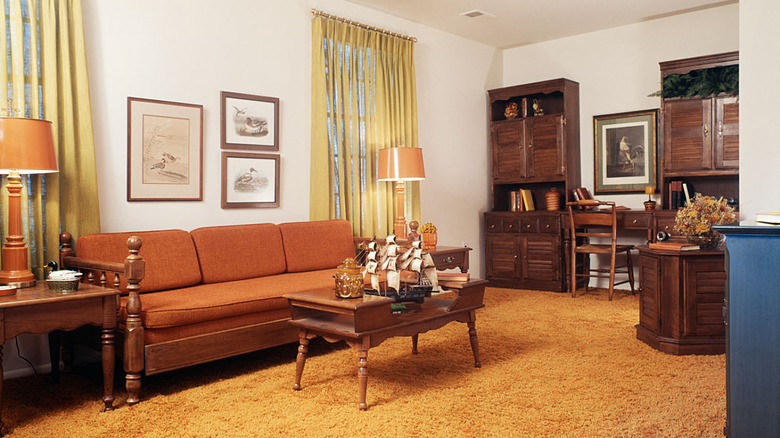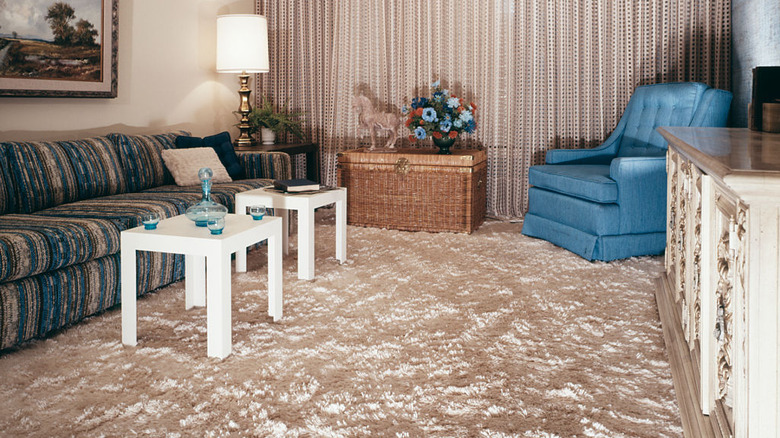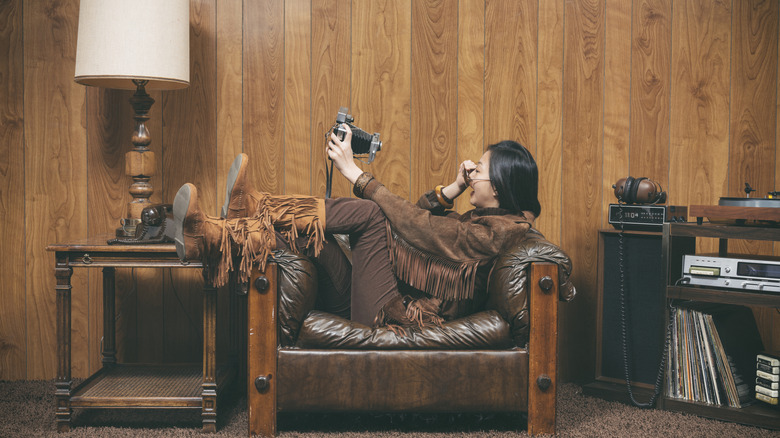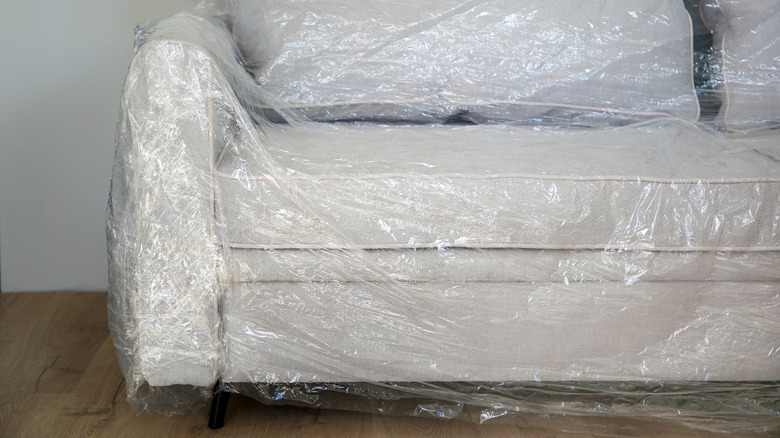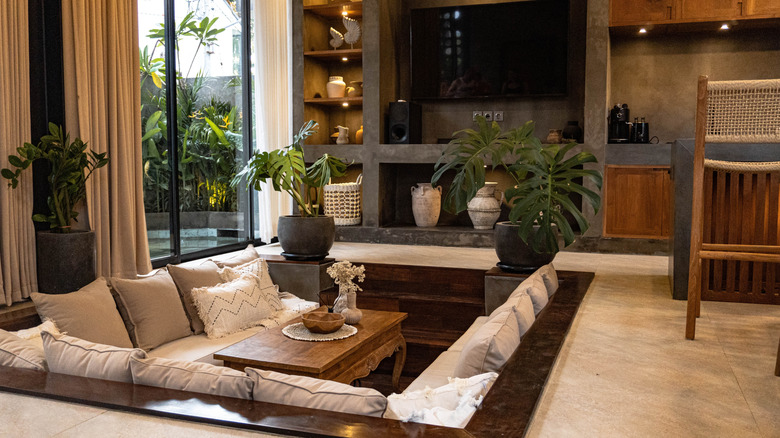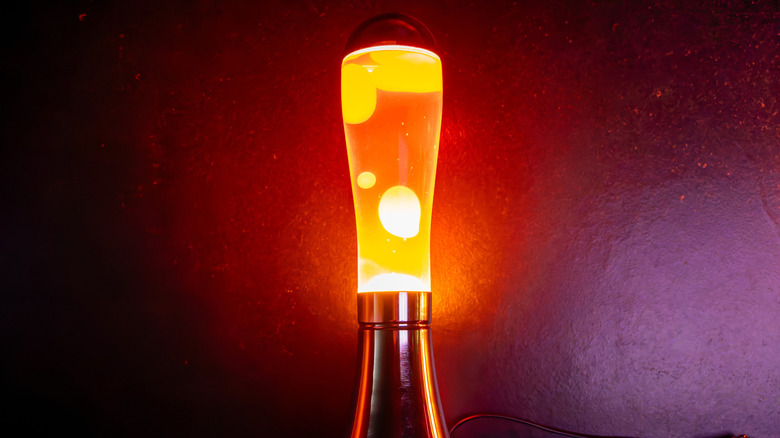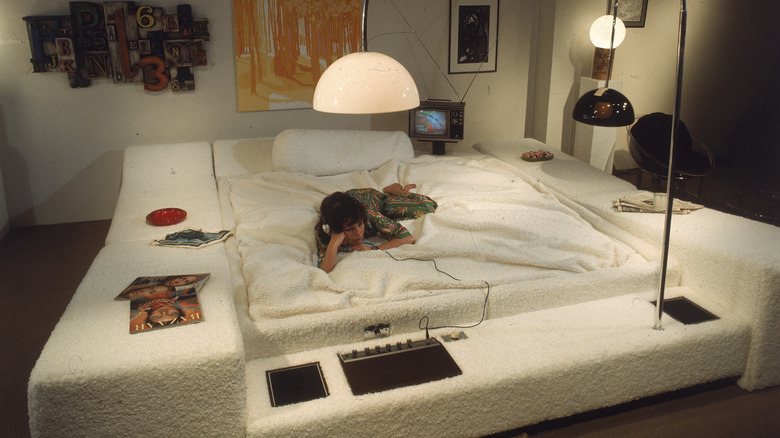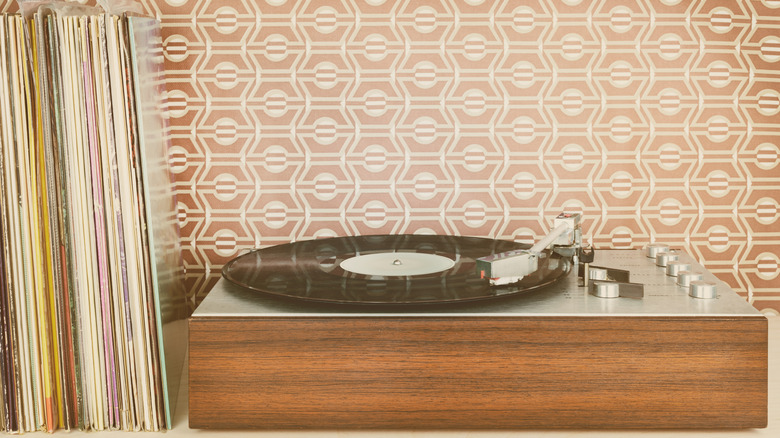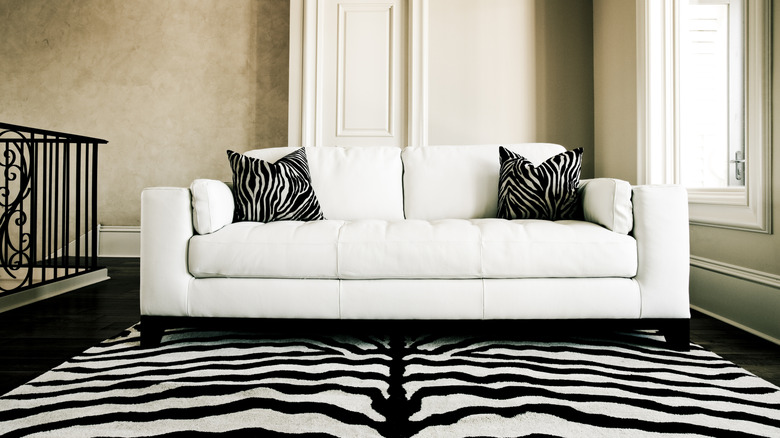10 Home Decor Essentials From The '70s Now Considered Bold
The 1970s brought us some pretty incredible — and also sometimes questionable — trends in pop culture and fashion. Men and women decked themselves out in bellbottoms, tie-dye, high-waisted pants, and platform shoes. Meanwhile, rollerskating and major blockbusters like "Jaws," "Star Wars," and the one and only Cher became national pastimes.
Another arena where the disco era was making a major splash? Home decor — which became bolder, brighter, and more daring than ever before. This was, after all, a period of anti-conformity and questioning convention, carrying over a lot of the rebellion and bucking of tradition that had been a hallmark of the preceding hippie era of the 1960s. Today, a lot of the trends that became commonplace in the 1970s seem like bold, adventurous design moves, so if you're looking for home decor that makes a big statement, look no further than these '70s staples for some inspiration.
Avocado green interiors
Millennials may be known for their love of avocado toast, but it's Baby Boomers and their parents who put "avocado green" in the interior design limelight. This bright color may seem like a bold and unusual home decor choice today, but in the 1970s, it was peak chic and used on everything from walls to rugs to furniture.
Lots of orange
Orange — especially burnt orange — could be found anywhere and everywhere in homes in the 1970s — from carpeting to paint to furniture to wallpaper. Today, even if orange is starting to trend in some home design circles, incorporating it in your living room or kitchen is still considered a daring move that certainly strays from the norm.
Shag carpets
Nothing recalls the groovy days of the 1970s quite like a shag carpet. These thick rugs made of long, shaggy fibers were comfy and gave off that bohemian vibe that was so in demand in the '70s, especially when styled in bright, bold colors. They're a less conventional choice today, and using them in living rooms or bedrooms makes a big statement in the 21st century; however, many people have found them difficult to clean and maintain in the long term.
Wood-paneled walls
Do wood-paneled walls make you think of the basement hangout in "That '70s Show"? Wood interiors were definitely a '70s staple, but while you may now consider them a disco-era relic, the once-ubiquitous wood walls may be coming back in style. This time, however, wood-paneled walls have a bolder, unique look that can be customized to fit the homeowner's personality — including using different colors and textures to make the wood really pop.
Plastic-covered couches
Plastic-covered couches weren't just a design choice in the 1970s; they were a way of life. American families seemingly from all backgrounds had a penchant for covering their furnishings in plastic to protect them from the wear and tear of everyday use — even if it came at the cost of comfort and style. It's less common nowadays, but on the plus side, if you do opt for plastic coverings on your furniture, they're now BPA-free and less sticky than their predecessors.
Conversation pits
Conversation pits, also known as sunken living rooms, were a unique trend that took off in the 1960s, and by the late '70s, could be found not only in homes but also in public spaces, such as airports and hotel lounges. Homeowners, however, quickly found there were some literal downsides to having a giant hole in your living room — namely, it was a major fall hazard. The trend has seen a bit of a resurgence in the 2020s, but it's now considered a daring (and, given the risk of bodily harm, even brave) design choice.
Lava lamps
Today, lava lamps as home decor are considered a groovy home accessory that stands out from the usual traditional mood lighting. But in the late 1960s and 1970s, lava lamps weren't just for hippies or avant-garde decorators. They were a popular and fairly mainstream lighting choice — with an "executive" lava lamp model even advertised in a 1968 edition of the American Bar Association Journal, according to Smithsonian Magazine.
Waterbeds
They wobble; they rock; they make you feel like you're floating. And in the 1970s, people couldn't get enough of them. We're talking, of course, about waterbeds. Invented in 1968 by 24-year-old graduate student Charles Hall, the waterbed was a 1970s staple that was not only considered comfortable and cool, but came to symbolize the counterculture movement. By 1991, about 1 in every 5 mattresses sold was a waterbed, but the lovefest wasn't meant to last. Leaks and the advent of easier-to-manage mattress alternatives made waterbeds a less popular choice – today, a waterbed would certainly be considered a bold decision.
Daring patterns
Just as bold colors were de rigueur in the 1970s, so were daring patterns on wallpaper and upholstery. Geometric patterns and psychedelic shapes weren't categorized as trendy design choices, but rather as the fashion of the decade. Today, however, opting for anything eye-catching that strays from neutrals is generally considered a bold choice for wallpaper or other home decor.
Animal prints
While "big cat" animal prints like leopards and cheetahs have long been in vogue, the 1970s brought other prints, like snakeskin and zebra stripes, into the rugs and upholstery of homes everywhere. You may still see some jungle-inspired prints gracing the sofas and walls of home interiors today, but they would certainly qualify as a bold design choice in 2025.
